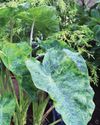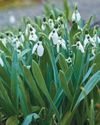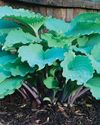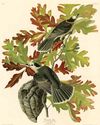
Humans have been distancing ourselves from nature for centuries, with a rapid acceleration since the Industrial Age. Today, as habitat loss, climate change and pesticide use drive a drastic decline in pollinators, which are responsible for at least a third of the food we eat worldwide, many of us are realizing it's time to invite nature back in.
People have never been more aware of the need to boost the populations of birds and bats, bees, butterflies and other invaluable insects. Our cities may be the strongest lever we have to reverse their downward trend.
While about 41 percent of land in the United States is agricultural, 54 percent is covered by cities and suburbs plus airports and other infrastructure. And the city portion is growing fast, adding one million urban acres every year, according to a 2018 report.
In Nature's Best Hope: A New Approach to Conservation that Starts in Your Yard, Douglas Tallamy flags built and urban spaces as the next frontier for ecological transformation. He writes: "Restoring viable habitat within the human-dominated landscapes that separate habitat fragments-with as much of this land as possible is the single most effective thing we can do to stop the steady drain of species from our local ecosystems."
Cities across the nation are finding creative and inspiring ways to encourage pollinators by "rewilding" their patches of green and finding win-win solutions that enrich and build communities. One of the pioneer projects to gain acclaim happened in my current hometown of Seattle, Wash.
MAKING BEELINES
Esta historia es de la edición September - October 2022 de Horticulture.
Comience su prueba gratuita de Magzter GOLD de 7 días para acceder a miles de historias premium seleccionadas y a más de 9,000 revistas y periódicos.
Ya eres suscriptor ? Conectar
Esta historia es de la edición September - October 2022 de Horticulture.
Comience su prueba gratuita de Magzter GOLD de 7 días para acceder a miles de historias premium seleccionadas y a más de 9,000 revistas y periódicos.
Ya eres suscriptor? Conectar

Pot It Up
Shake up the containergarden with theseNorth America –native perennials

THE GARDEN PATH TO PERDITION
I WAS CRUISING RIGHT ALONG, feeling okay about myself, when I came across a list of the Seven Deadly Sins.

A Productive PATIO
Tiny fruit, vegetable and herb plants help gardeners maximize any sort of growing space

TROPICAL FUSION
A FUSS-FREE APPROACH TO USING BOLD TROPICAL PLANTS IN ANY TEMPERATE GARDEN

WINTER READING
Pass the time with any of these inspiring books

SENSING A PATTERN
Greg Coppa reflects on an odd weather year and what continued warming may mean for his Rhode Island garden

TOP-PRIZE PERENNIALS
A foliage masterpiece for shade and a late bloomer for sun

MARK WESSEL
What's new for fruit and vegetable gardeners?

KINGS OF THE NORTHERN FORESTS
A look at the trees, shrubs and perennial plants that bolster life in Ecoregion 5

PROJECT FEEDERWATCH
Gardeners can help scientists know just where the birds are in winter